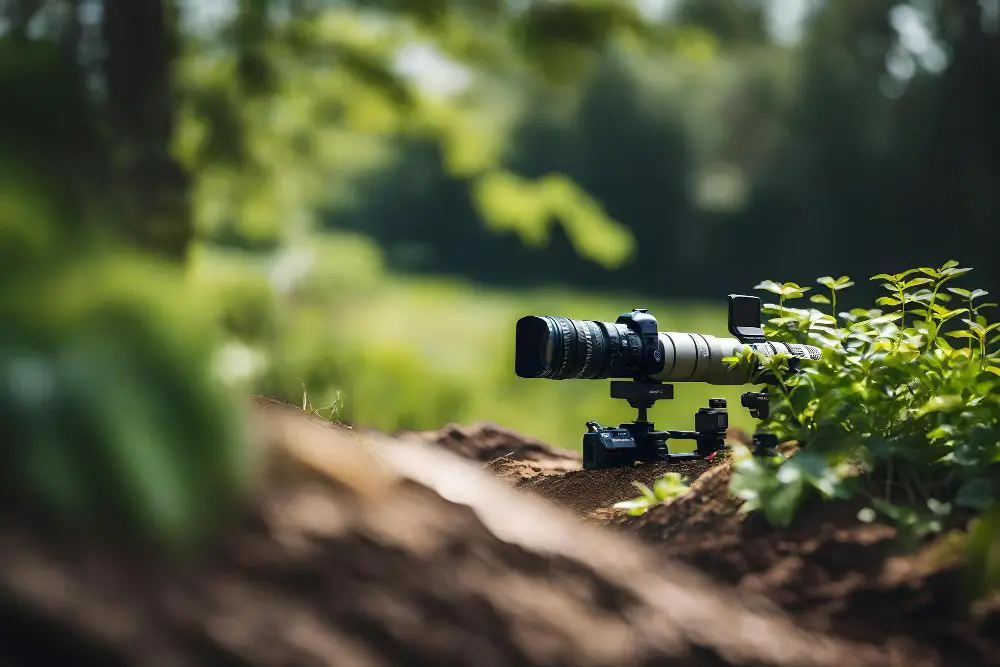In the world, observation and exploration of the environment are vital aspects that help us expand our perception and gain more information. In this context, understanding the concept of the field of view of scopes and binoculars is crucial because they affect the effectiveness of observations, hunting, astronomical research, and much more. In this article, we will consider the main aspects of the field of view of scope and binoculars, their significance, and their impact on various fields of activity.
Field of view is a concept that refers to the width of the area or angle that the observer’s vision can cover through the lens of an optical device such as a night vision scope or binoculars. It is like a “window” to the world through which we observe the environment. A wide field of view allows you to capture more details in the image, providing more information for analysis and perception.
The importance of the field of view is felt in various situations. In hunting, for example, the scope’s wide field of view gives the hunter a better chance of spotting the animal and determining its movements. Also, when observing wildlife, the field of view of binoculars allows you to study species’ diversity and behavior in greater detail.
In astronomical research, a telescope’s wide field of view helps observers capture more objects in the sky and study their interactions. This is especially important when observing planets, star clusters, or galaxies.
But What is the Field of View? How is Field of View Measured? Let’s find out.
What is Field of View?
Field of view is one of the key concepts in the world of optics and optical devices. This concept plays a vital role in various aspects of life, from scientific research to sports activities, allowing us to gain more information and expand the boundaries of perception.
The importance of the field of view is manifested in various spheres of activity. For example, having a wide field of view in hunting is essential because it helps observe a large area and fast-moving animals. For astronomical observations, the telescope’s wide field of view allows you to observe more objects in the sky and study their interactions.
However, it is essential to remember that a wide field of view can be accompanied by reduced object detail, especially at long distances. Therefore, when choosing an optical device, you should balance between a wide field of view and the image quality you get.
There are different ways to measure the field of view. One of them is to express it in degrees, that is, the angle covered by the star. Another way is to say the field of view in meters per 1000 meters (or feet per 1000 yards) when looking at an object 1000 meters (or yards) away. This is called “object selection.” The smaller this value, the wider the field of view.
Fields of view can be fixed or variable, depending on the type of optical device. A fixed viewport has a constant width, while a variable viewport allows you to adjust the width depending on the user’s needs.
The field of view is an important parameter when choosing an optical device, which determines the width of the area you can cover with your eyes. A wide field of view helps to get more information and make observations more convenient, but you should balance it with image quality. Understanding this concept helps us better perceive the world and use optical devices with greater efficiency and pleasure.
How is Field of View Measured?
The field of view is an important parameter when choosing optical instruments such as binoculars, telescopes, and scopes. It determines the width of the area that can be covered by the eye when observing through the device. Understanding how the field of view is measured is critical to using it effectively and getting more information during observations.
There are several ways to measure the field of view, each with its characteristics and advantages. Let’s consider some of them and their importance.
Expression in degrees: One of the most common ways to measure the field of view is to express it in degrees. This means measuring the angle subtended by the star when viewed through the instrument. For example, if the device has a field of view of 7 degrees, you can cover an area of 7 degrees with your gaze.
Object selection: Another way is to measure the field of view by selecting an object at a distance. For example, the field of view may be expressed in meters per 1000 meters or feet per 1000 yards. This means how wide of an area you can see when looking at an object 1000 meters (or yards) away.
Distance on an object: Another method of measuring the field of view is to indicate the distance on an object at which it occupies the entire volume of the field of view. This can be expressed in meters or yards. For example, if it is indicated that the field of view is 120 meters by 1000 meters, this means that at a distance of 1000 meters, an object with a width of 120 meters will occupy the entire volume of the field of view.
It is important to remember that the field of view can be defined as a horizontal, vertical, or diagonal line of sight. This depends on the type of optical instrument and the measurement methods used.
Accurately measuring the field of view is essential in various fields of activity. In hunting, an adequately selected field of view helps to provide more opportunities to detect and observe animals. In astronomy, a well-chosen telescope with a large field of view allows you to observe more objects in the sky.
Magnification, Eye Relief, and Field of View
When choosing and using optical instruments such as binoculars, telescopes, and scopes, it is essential to understand and consider several vital parameters affecting observations’ quality and convenience. One of the most important aspects is the magnification, the far zone, and the field of view. Let’s consider in more detail their role and how they interact.
Magnification is a parameter that indicates how much larger objects appear through an optical device compared to how we see them with the naked eye. It is measured in multiples (e.g., 8x, 10x, 20x, etc.). Magnification helps to look at distant objects closer and in more detail. However, it is essential to balance magnification with other parameters, such as field of view and distance, as magnification can limit the area we can see in the instrument.
Another critical parameter is the distance zone or the eye’s distance to the eyepiece. It indicates at what distance from the eyepiece to the observer’s eye a complete image of the object can be obtained. The distance zone is essential for viewing comfort, especially for people who wear glasses or contact lenses. The insufficient size of the remote location can cause a feeling of tension and discomfort during observations.
The field of view defines the width of the area that we can see through the device. This is an important parameter because it depends on how many details and objects we can simultaneously capture with our eyes. A wide field of view allows you to observe more information and detect the movements of objects, which is especially important, for example, during hunting or observing nature. However, it is essential to remember that magnification can affect the width of the field of view: magnification usually reduces the width of the field.
It is important to note that magnification, far zone, and field of view interact. Magnification can affect an area at a distance; for example, high magnification may require more precision in positioning the eye to get the full image. Magnification also affects the width of the field of view, and it is essential to find a balance between these parameters depending on specific needs and situations.
Magnification, distance zone, and field of view are essential parameters that determine the comfort and efficiency of using optical devices. Correctly selected values of these parameters help ensure high-quality and convenient observations, considering various needs and situations. Understanding the interplay between magnification, far range, and field of view allows users to maximize the potential of optical instruments for detailed and comfortable observations.


















